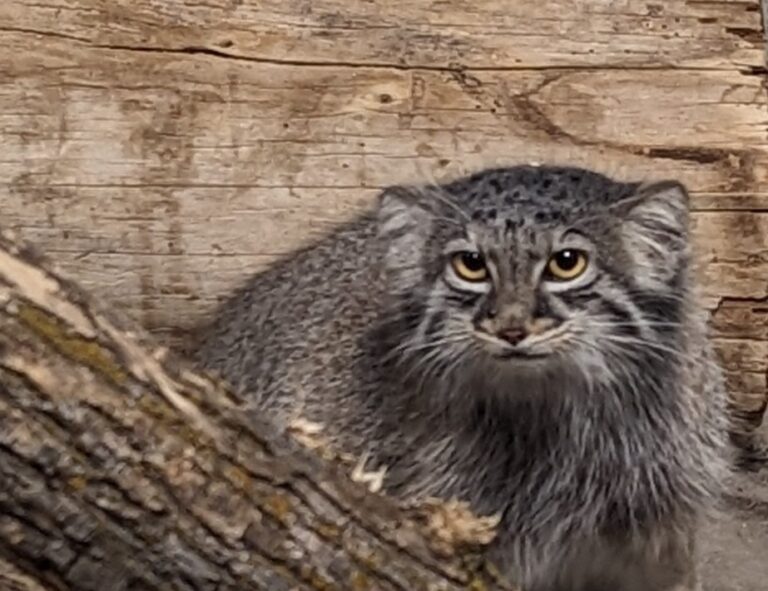

Welcome Kaarina
Utah’s Hogle Zoo is excited to welcome 2-year-old Pallas’ cat, Kaarina, to Asian Highlands!
Kaarina’s journey brings her from Columbus Zoo in Ohio to Utah’s Hogle Zoo on a breeding recommendation from the Association of Zoos and Aquariums (AZA) Pallas’ cat Species Survival Plan (SSP), where she begins an exciting new chapter.
Carrying on a legacy
At Hogle Zoo, Kaarina will have valuable breeding opportunities and the chance to continue a family legacy deeply rooted in Utah. Kaarina is the great-granddaughter of our former Pallas’ cat breeding pair, Petenka and Hal. Her grandmother, Ting, was born at Hogle Zoo in 2017 before moving to another facility, where she had Tiina, who had Kaarina at the Columbus Zoo in 2023. With Kaarina’s arrival, her family’s lineage returns to Hogle Zoo.

Settling into her new habitat
Pallas’ cats are known for their thick, heavy coats and signature grumpy faces. But their elusive and reserved nature isn’t just about their iconic looks. Pallas’ cats are most active in late summer and early fall, bulking up for winter and preparing for breeding season. Once winter sets in, they prefer to lay low, becoming less active during the day and often retreating to a cozy bed – a spot guests will likely find Kaarina in while she settles into her habitat.
About Pallas' cats
Pallas’ cats are found in the desert and mountain regions of the Himalayas, living at altitudes of more than 10,000 feet above sea level. Pallas’ cats are most active at dawn and dusk. Pallas’ cats den in small caves, cracks and abandoned burrows of marmots, foxes, and badgers. They are adapted for life in cold climates where temperatures may reach below 60 degrees Fahrenheit.
Fun facts about Pallas' cats
- Amazing adaptations: Pallas’ cats are built for life in the highlands. Their small, round ears are set low on their heads, helping them stay hidden among the grasses as they prowl. These small ears, combined with their dense coats and bushy tails, minimize heat loss and keep them warm, even in the frigid temperatures of the Asian Highlands.
- Fierce felines: Pallas’ cats live where large predators like tigers and leopards are and have evolved big attitudes to help them survive. They’re often called the signature “grumpy cat” for their iconic look.
- Daily diet: A Pallas’ cat’s main diet is pika. Pikas are a small member of the rabbit family found both in the Asian highlands and North America (we even have them in Utah!).
Pallas' cat conservation
Pallas’ cats live in central and western Asia’s montane grasslands and rocky steppes. Despite being classified as lower risk on the International Union for Conservation of Nature (IUCN) Red List, they face significant threats. Pallas’ cat populations are small, fragmented, and declining due to habitat loss from livestock encroachment, agriculture, infrastructure development, and mining. Other threats include prey loss, poisoning, and climate change. Pallas’ cats depend on prey like pikas and small rodents and shelters like marmot burrows, making them particularly vulnerable to environmental changes and human activity.
You can visit Kaarina in Asian Highlands. Look for her curled up in one of her many cozy spots throughout her habitat!

